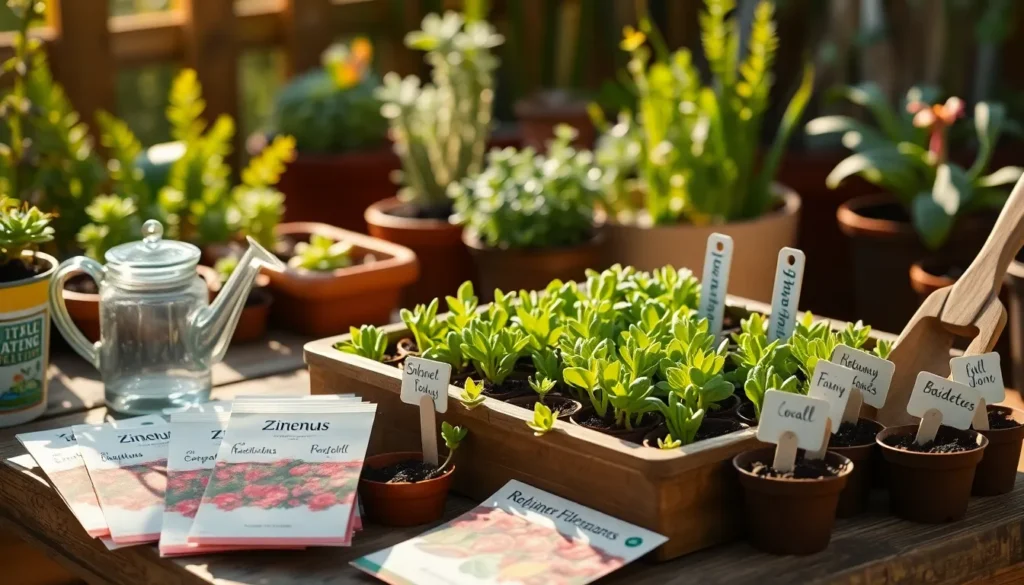Embarking on the journey of starting a garden from seeds is like opening a doorway to endless possibilities; it invites both novice and seasoned gardeners into a world where patience and nature’s magic intertwine. Whether you’re a green-thumbed veteran or taking your first steps into the soil, the allure of watching a seed transform into a thriving plant is an experience that never loses its charm. This article is crafted to guide you through the process of starting a garden with seeds that require minimal fuss, making it perfect for anyone eager to embrace the joy of gardening without the overwhelming commitment.
Low-maintenance gardening doesn’t mean compromising on beauty or bounty; rather, it is about choosing plants that thrive with minimal intervention, allowing you to enjoy the fruits of your labor without constant upkeep. Here, you will discover ten resilient plants that not only promise lush growth but also offer a forgiving nature, making them ideal candidates for those just beginning their gardening adventure or for those with a packed schedule. With practical tips and insights, this guide will empower you to cultivate a vibrant garden with confidence and ease.
Delve into the wonders of low-maintenance gardening as we explore seed selection, planting techniques, and essential care strategies. You’ll learn how to choose the right seeds, prepare your planting area, and adopt simple care routines that ensure success even under less-than-ideal circumstances. By the end of this journey, you’ll be well-equipped to nurture a thriving garden, basking in the satisfaction of watching your seeds grow into flourishing plants that reflect the care and attention you’ve invested.
Choosing Easy-to-Grow Seeds
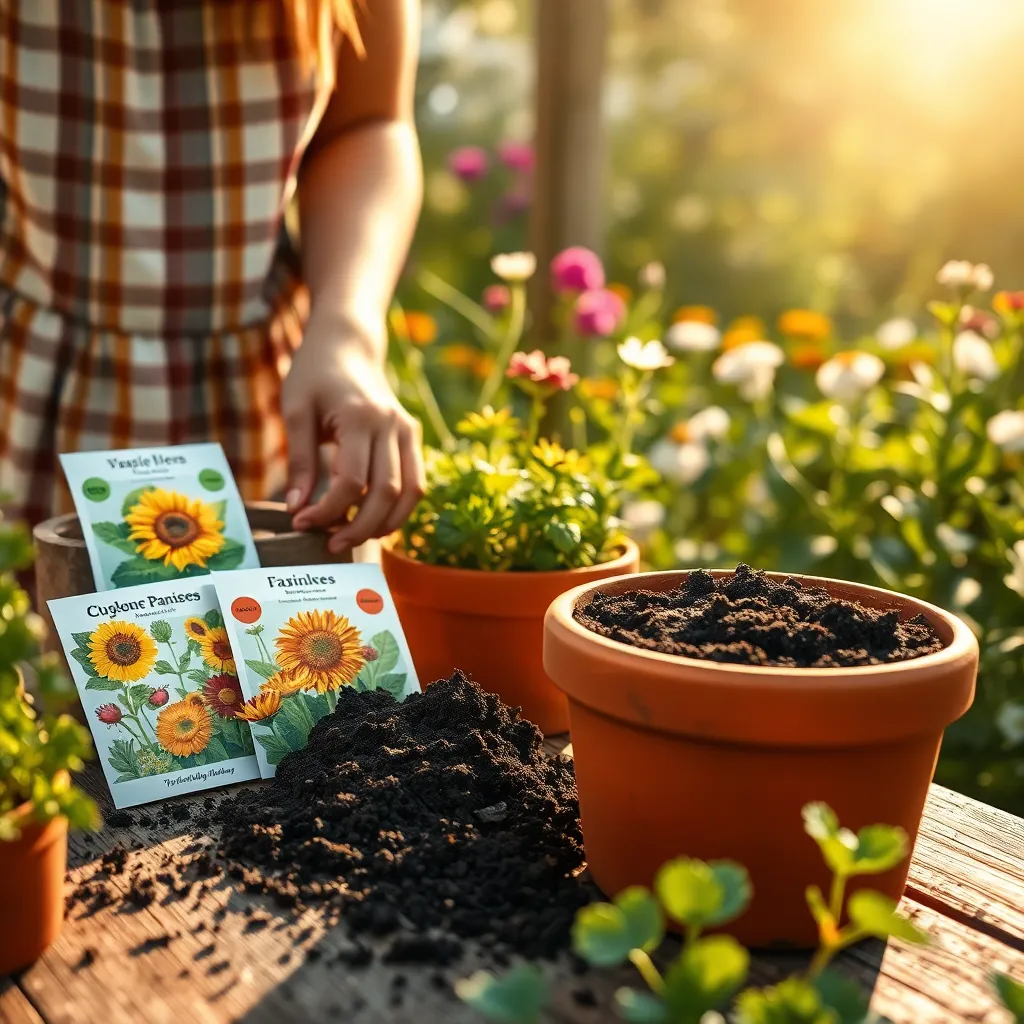
When starting a garden from seeds, choosing the right seeds can make all the difference. For beginners, opting for easy-to-grow varieties such as radishes, lettuce, and sunflowers is a smart move. These plants have a reputation for being forgiving and thrive in a range of conditions, making them ideal for new gardeners.
Consider the growing conditions specific to each plant to ensure success. Radishes, for example, prefer well-drained soil and a sunny location, while lettuce can tolerate partial shade and cooler temperatures. Planting these seeds directly into the garden bed often leads to better results, as they avoid transplant shock.
It’s important to get the timing right when sowing seeds in the ground. For most easy-to-grow seeds, sow them after the last frost date to give them a healthy start. This timing ensures that your plants have the warmth they need to germinate and grow vigorously.
For those looking to experiment beyond the basics, try incorporating herbs like basil and cilantro, which also adapt well to various conditions. These herbs require regular watering but reward gardeners with lush growth and fresh flavors. By choosing seeds that align with your local climate and soil conditions, you’ll set your garden up for a successful growing season.
Preparing Your Garden Soil
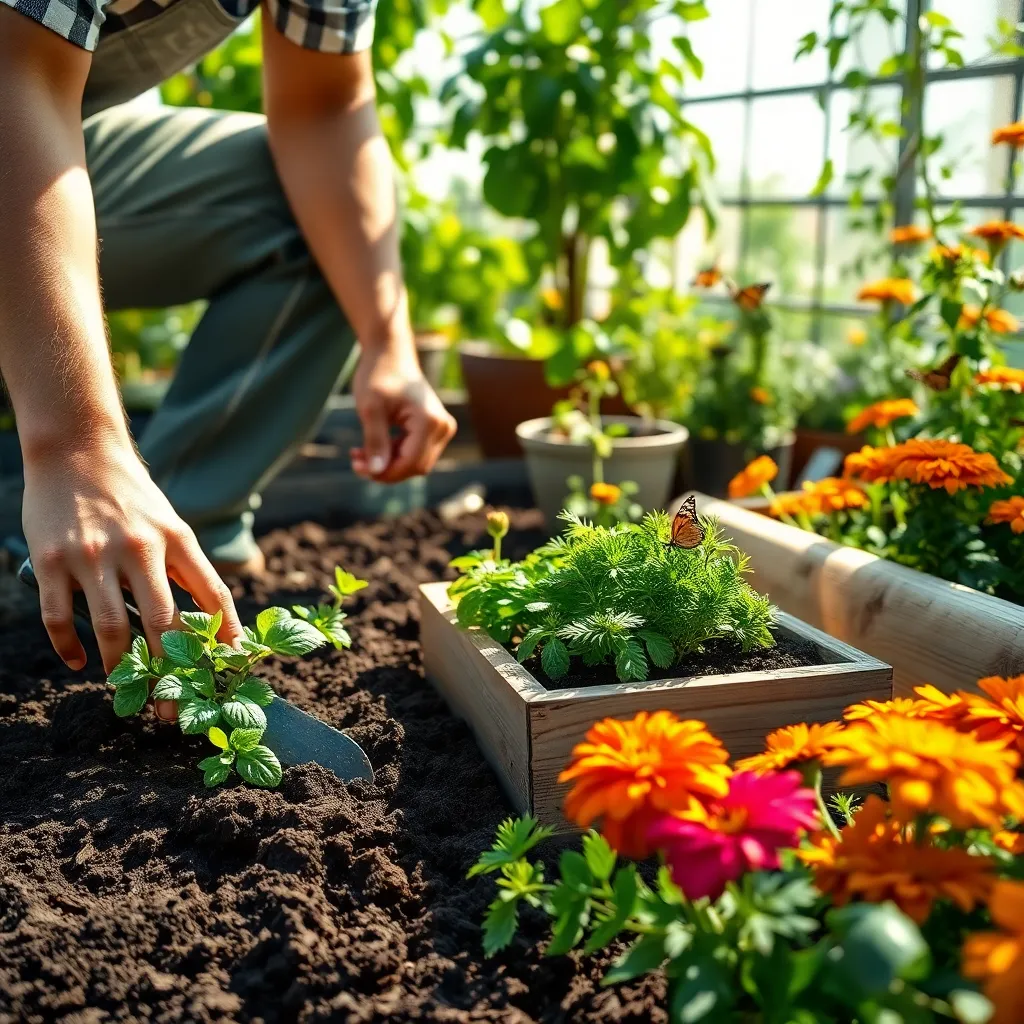
Before sowing seeds, it’s crucial to prepare your garden soil to create an optimal growing environment. Begin by removing any weeds, rocks, or debris to ensure your plants have room to grow without competition.
Next, assess the soil’s texture and drainage capabilities as these factors significantly impact plant health. Use a garden fork or tiller to loosen compacted soil, which improves aeration and allows roots to penetrate more easily.
Incorporating organic matter, such as compost or well-rotted manure, enriches the soil with nutrients essential for seed germination and plant growth. Aim for a mixture that feels crumbly and holds moisture without becoming waterlogged, as this balance supports healthy plant development.
Consider testing your soil’s pH, as most plants thrive in slightly acidic to neutral conditions (pH 6-7). If necessary, amend the soil with lime to raise the pH or sulfur to lower it, ensuring it meets the needs of your chosen seeds.
Simple Seed Sowing Techniques
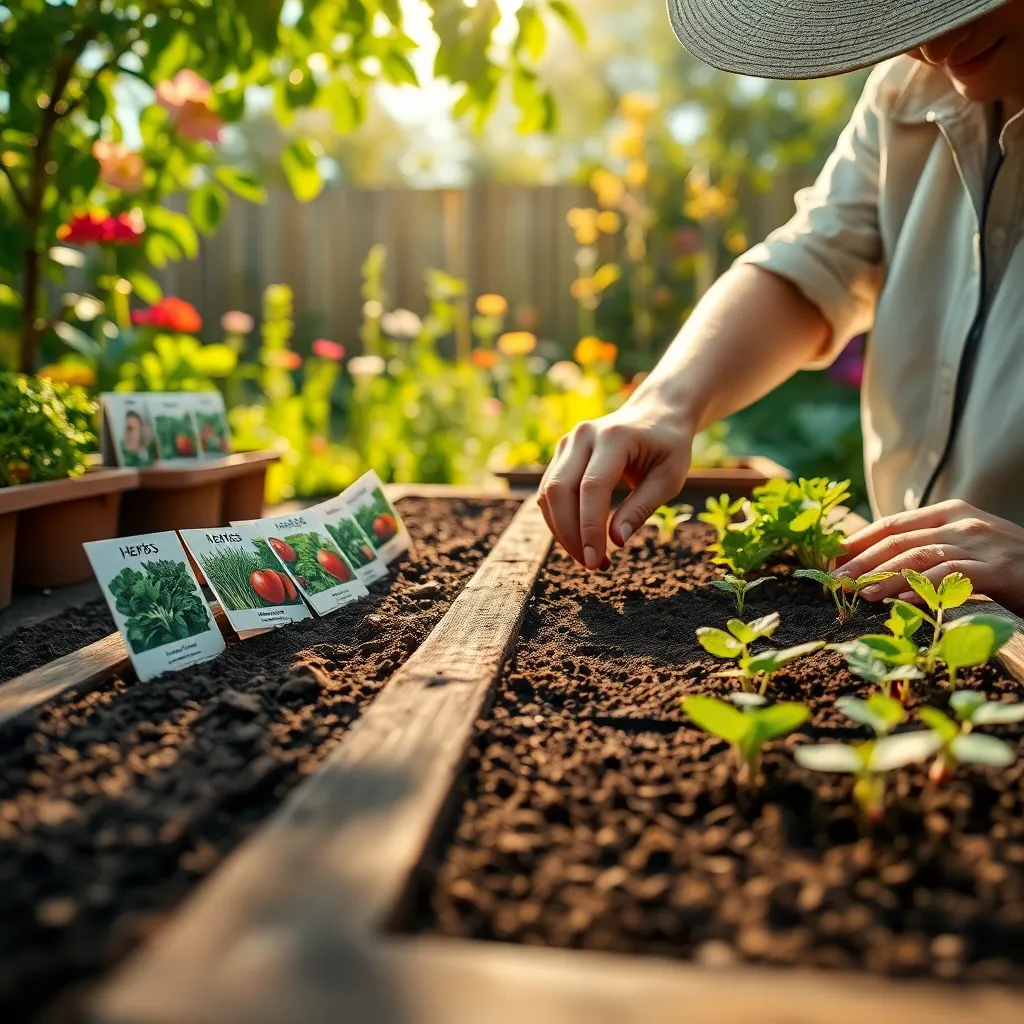
Sowing seeds directly into your garden is a straightforward and rewarding process. Choose a sunny spot with well-drained soil, as most seeds thrive in these conditions.
Begin by lightly raking the soil surface to create a fine texture. This ensures that seeds can make good contact with the soil, promoting better germination rates.
Once your soil is prepared, sow seeds evenly according to the instructions on the seed packet. Different plants have specific requirements, so pay attention to the recommended depth and spacing.
After sowing, gently water the area using a fine spray to avoid displacing the seeds. Keep the soil consistently moist but not waterlogged, as this encourages seeds to sprout while preventing rot.
For gardeners seeking more advanced techniques, try succession planting for a continuous harvest. This involves sowing seeds in intervals, allowing you to enjoy fresh produce over a longer period.
Covering the seedbed with a light layer of mulch can help retain moisture and suppress weeds. Be sure to choose an organic mulch, such as straw or shredded leaves, which will break down and enrich the soil over time.
Optimal Sunlight and Placement
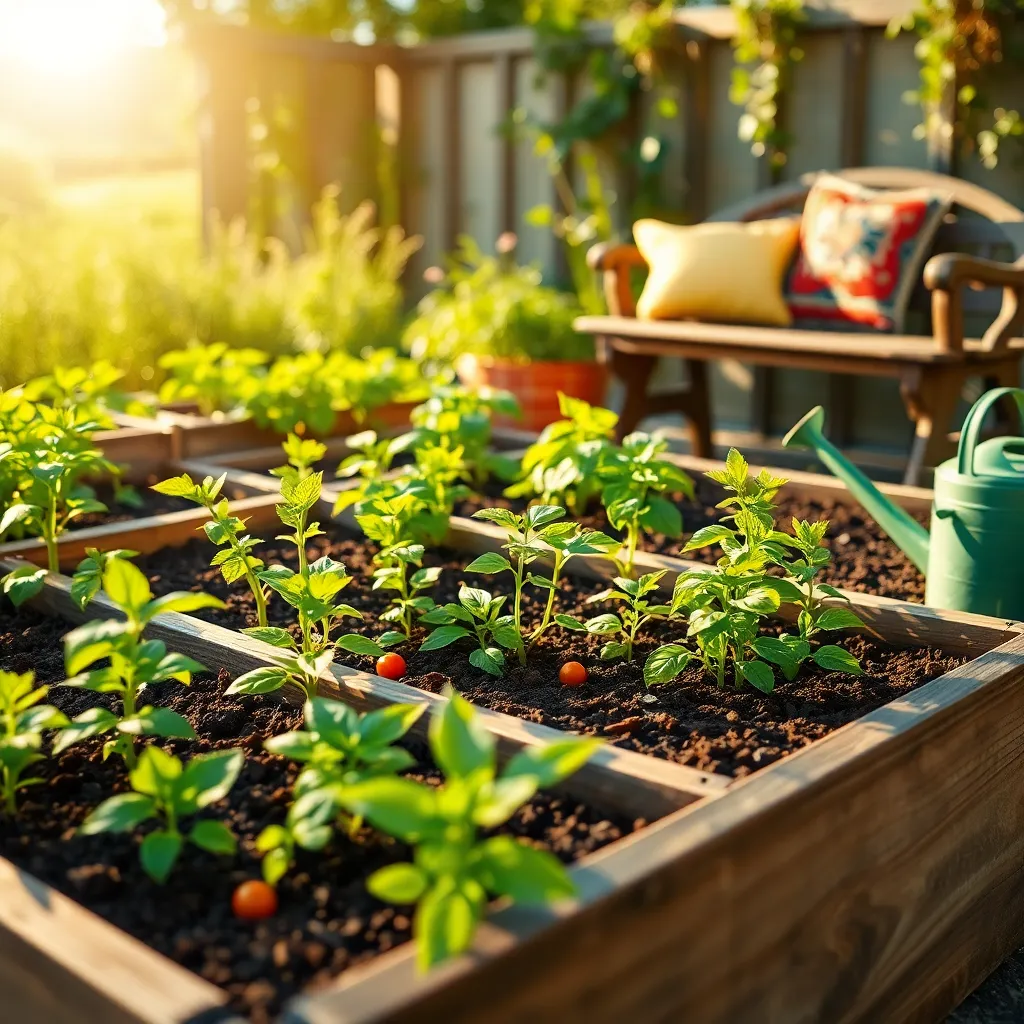
Understanding the optimal sunlight and placement for your plants is crucial to their growth. Most seeds require a spot with at least six hours of sunlight daily, but it’s essential to check the specific needs of the plants you are growing.
Consider the orientation of your garden; a south-facing area generally receives the most sunlight. For those living in hotter regions, providing some afternoon shade can prevent plants from scorching under intense sun.
While beginners can focus on finding a generally sunny spot, experienced gardeners might experiment with microclimates. Observing which spots in your garden are warmer or cooler will help tailor plant placement for optimal growth.
Ensure that the soil in your chosen spot drains well, as poor drainage can lead to root rot. Amending the soil with organic matter such as compost can improve both drainage and nutrient content, fostering a healthier garden environment.
Advanced gardeners might use reflective surfaces or garden structures to direct more light to shaded areas. This technique can be particularly useful for urban gardeners dealing with limited sunlight due to buildings or trees.
Efficient Watering Methods
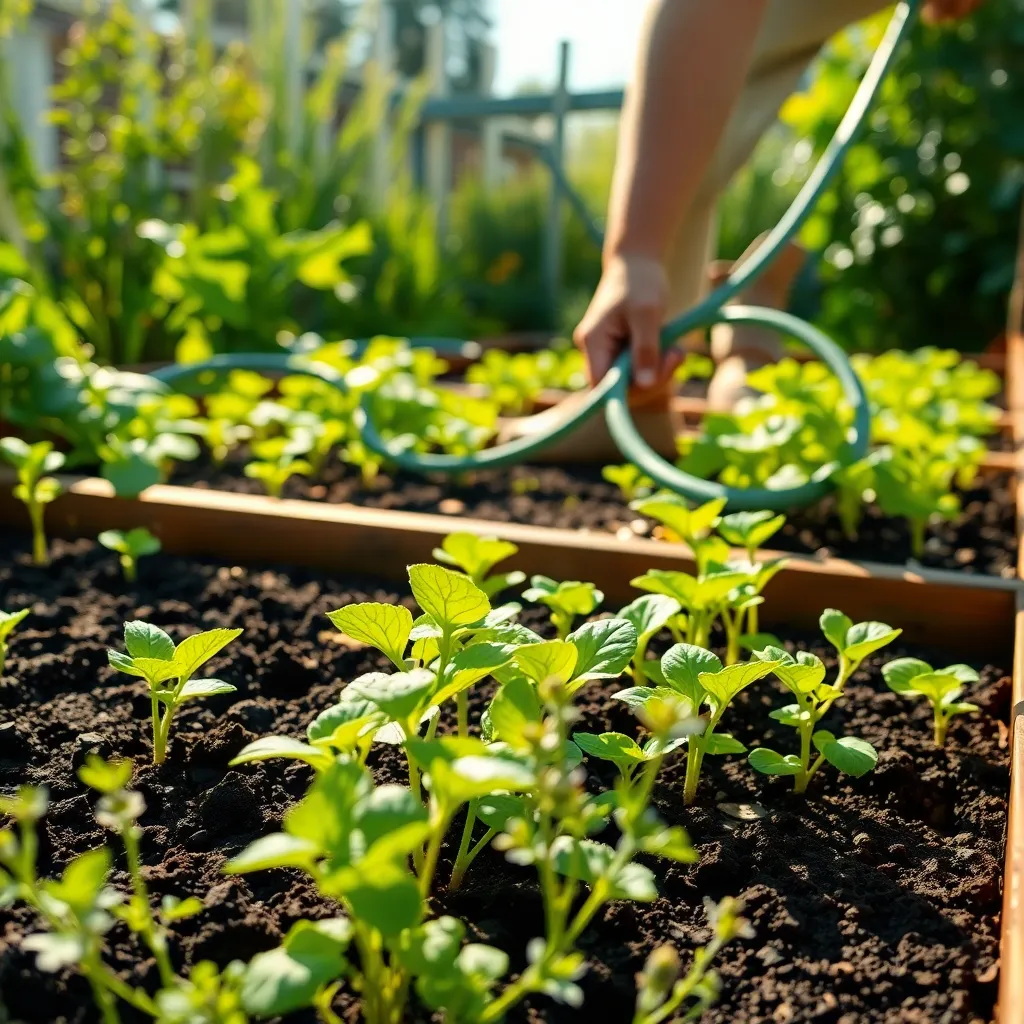
Watering your garden efficiently is crucial for healthy plant growth and resource conservation. Begin by understanding the water needs of your specific plants, as different species have varying requirements.
One practical method for efficient watering is using a soaker hose. This allows for consistent moisture delivery directly to the soil, minimizing evaporation and targeting the roots where it’s most needed.
Consider installing a drip irrigation system for more precise water application. This system can be adjusted to meet the specific moisture needs of various plants, making it ideal for gardens with a diverse range of species.
For those starting out, a simple and effective technique is to water early in the morning. This timing reduces evaporation, ensuring that more water reaches the plants, and also helps prevent the growth of mold and mildew.
Essential Nutrients for Seedlings

Providing seedlings with the right nutrients is crucial for their healthy development. Start with a balanced, water-soluble fertilizer designed specifically for seedlings to ensure they receive essential nutrients such as nitrogen, phosphorus, and potassium.
To avoid nutrient burn, use fertilizers at half the recommended strength during the first few weeks of growth. As seedlings mature, you can gradually increase the concentration to match their growing needs.
It’s important to nourish seedlings without overwhelming them. Apply fertilizer every two weeks and monitor the growth closely, adjusting the frequency based on the plant’s response and appearance.
For gardeners seeking organic options, compost tea or diluted fish emulsion are excellent alternatives. These natural fertilizers provide a gentle nutrient boost, promoting robust root development and overall plant health.
Managing Pests with Minimal Effort

Keeping pests at bay doesn’t have to be a labor-intensive task. Embracing a few simple strategies can help maintain your garden’s health with minimal effort.
Begin by planting pest-resistant varieties, which naturally deter common garden invaders. Many seed packets will indicate if they are bred for disease resistance, so always check labels before purchasing.
Another effective method is to practice companion planting, which involves growing certain plants together to enhance growth and protect against pests. For example, planting marigolds near vegetables can repel nematodes and other harmful insects.
Consider using organic mulch, such as straw or shredded bark, which not only conserves soil moisture but also reduces weed growth and provides a barrier against pests. This added layer also helps in maintaining soil temperature, creating a less favorable environment for pest proliferation.
Mulching for Moisture Retention
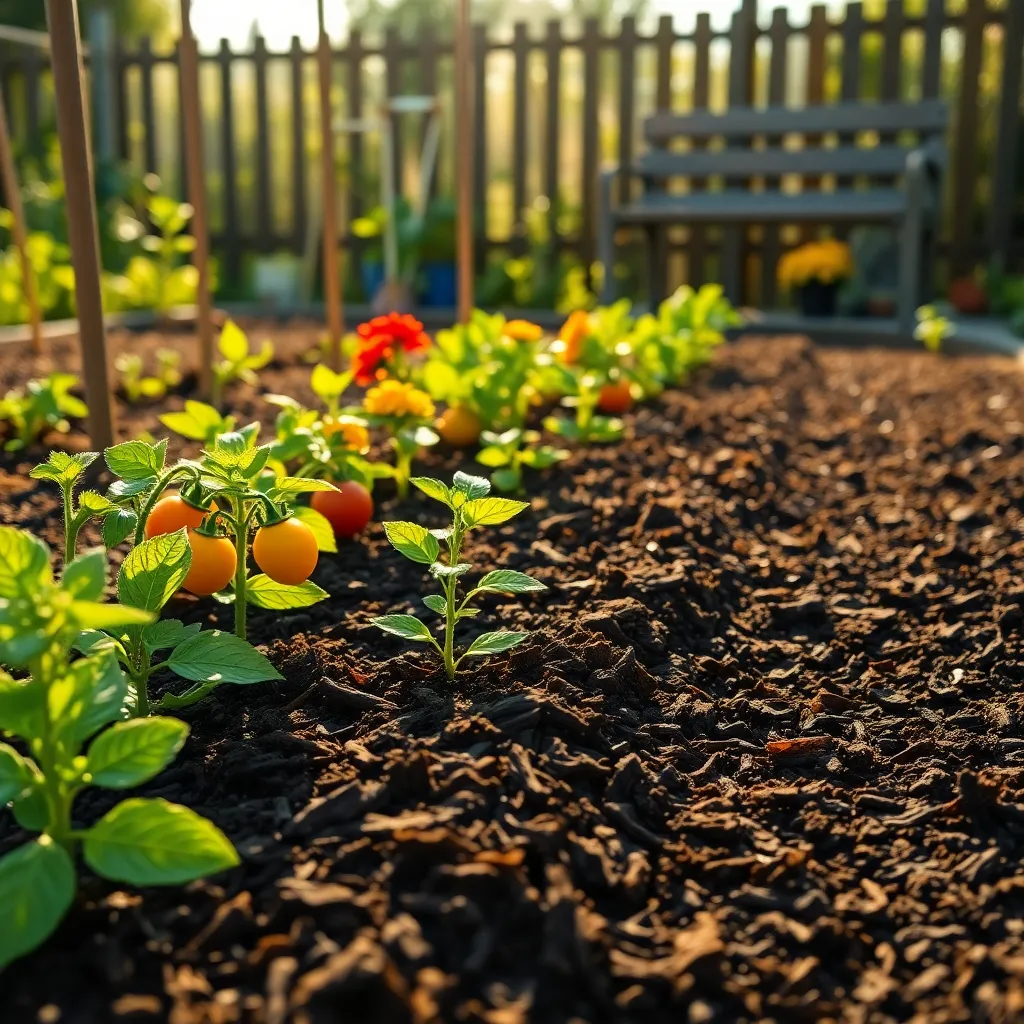
Mulching is an effective way to retain moisture in your garden, especially when starting from seeds. It acts as a protective layer, reducing evaporation and keeping the soil consistently moist.
Consider using organic mulches like straw, shredded leaves, or grass clippings, which decompose over time and enrich the soil. These materials are readily available and can be spread around your plants easily, providing both moisture retention and nutrients.
For beginners, apply a 2 to 3-inch layer of mulch around your seedlings, ensuring the soil is well-watered before mulching. This practice will help in maintaining the necessary humidity for seed germination and early growth.
Advanced gardeners might explore using more specialized mulches, such as pine bark or coco coir, which offer additional benefits like improved soil structure. These materials are excellent for areas with heavy rain, as they allow excess water to drain while keeping the soil moist.
Pruning for Healthy Growth
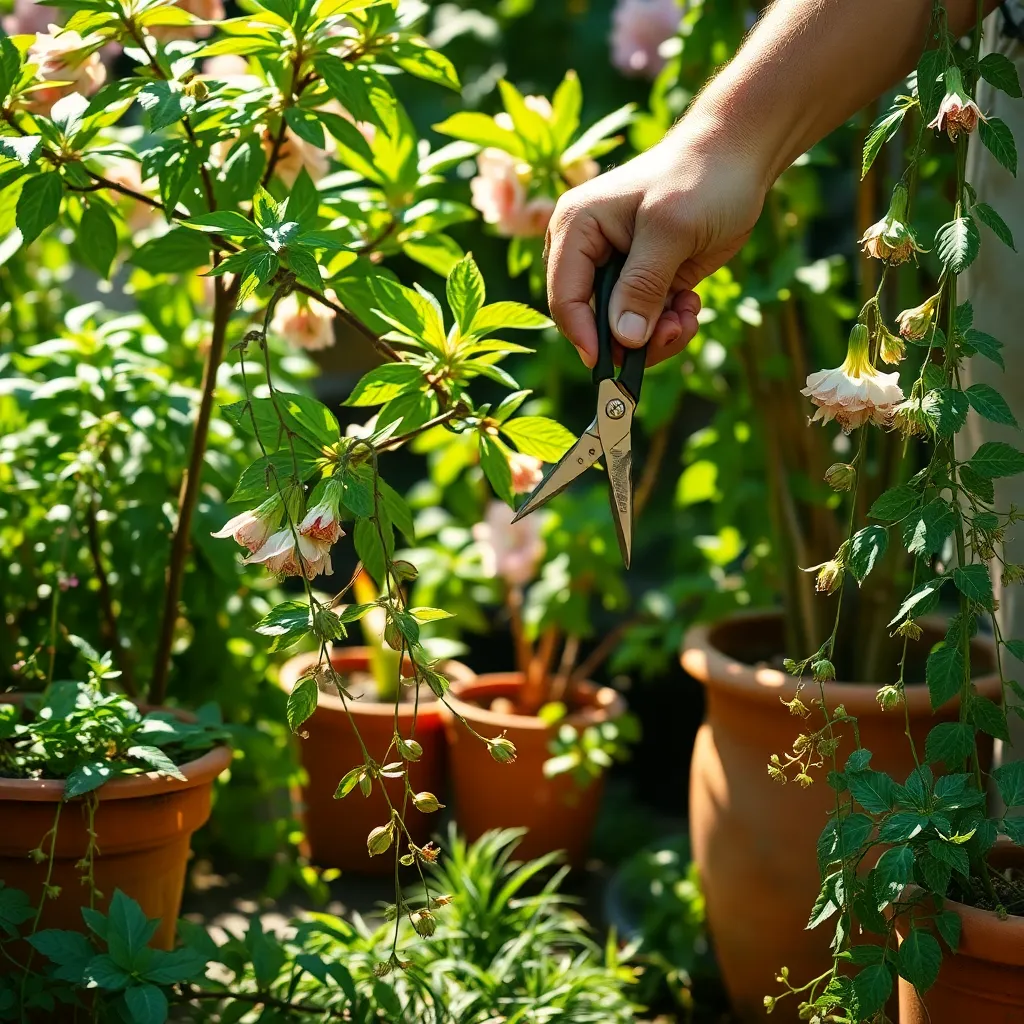
Pruning plays a crucial role in maintaining the health and vigor of your plants, promoting new growth and improving overall structure. By removing dead or diseased branches, you allow the plant to direct its energy towards healthier areas.
When starting with seeds, it’s important to understand that different plants have varying pruning needs. Herbs like basil benefit from pinching the top leaves, which encourages bushier growth and prevents the plant from becoming leggy.
Always use sharp, clean tools to make clean cuts, minimizing the risk of disease transmission. For beginners, investing in a pair of good-quality bypass pruners can make the task easier and more efficient.
As you become more experienced, you might explore advanced techniques like espalier or topiary to shape your plants artistically. Remember that timing is key; prune flowering plants after they bloom to avoid cutting off next season’s buds.
Harvesting with Low Maintenance
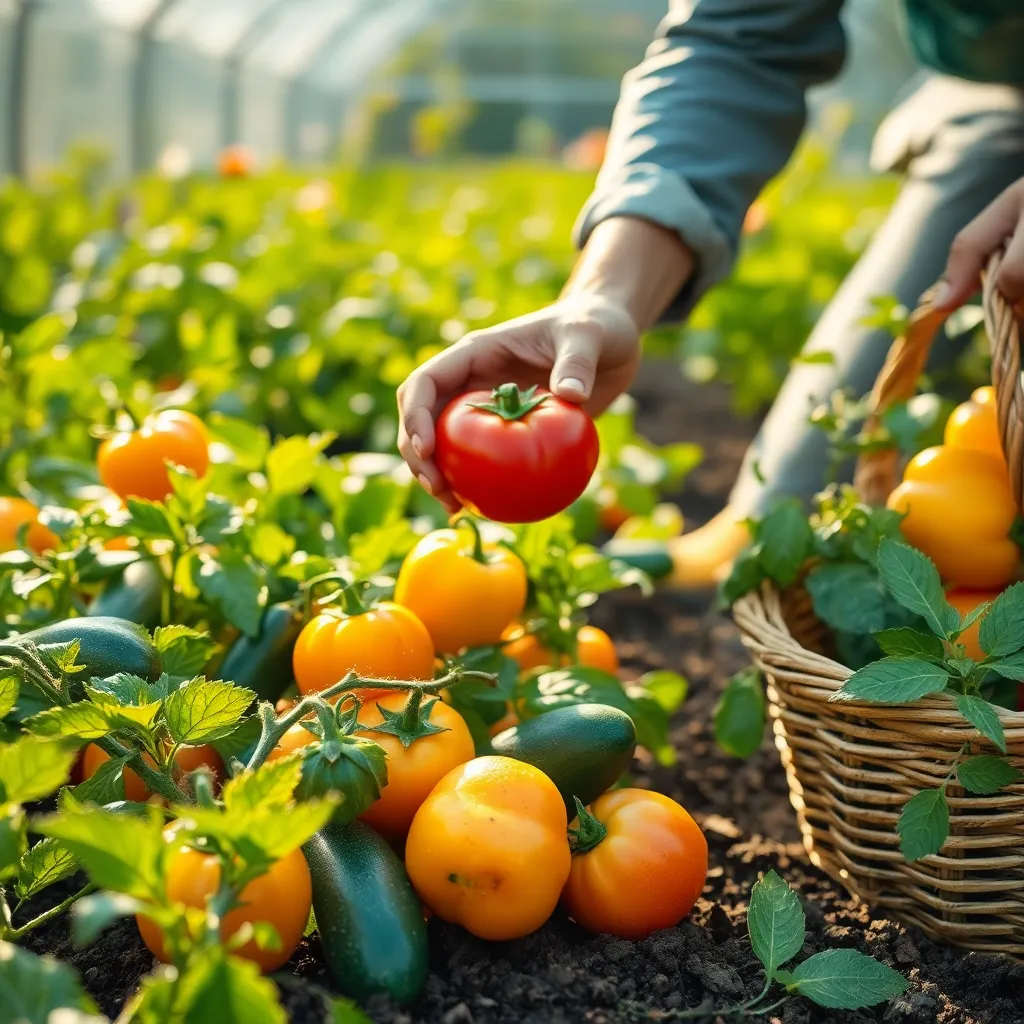
Efficient harvesting is crucial for maintaining a low-maintenance garden. By picking fruits and vegetables at their peak, you encourage the plant to produce more, extending your harvest season with minimal effort.
To reduce your workload, plan harvests during cooler parts of the day, such as early morning. This not only preserves the freshness of produce but also helps you avoid the midday heat, making the task more enjoyable.
Regularly monitor your plants for signs of readiness such as color change and firmness. For example, tomatoes should be harvested when they are fully colored but still firm to the touch.
If you’re new to gardening, start with vegetables that are easy to harvest like radishes and lettuce. These crops can often be harvested multiple times throughout the growing season, providing a steady supply of fresh produce with little effort.
For a more seasoned gardener, consider implementing succession planting. This technique involves staggering plantings every few weeks to ensure a continuous harvest, reducing the need for large-scale, time-consuming harvesting.
It’s important to use proper tools such as sharp scissors or pruners to cut fruits and vegetables from the plant. This helps prevent damage to the plants, ensuring they remain healthy and productive long into the growing season.
Conclusion: Growing Success with These Plants
In exploring ’10 Low-Maintenance Starting A Garden From Seeds,’ we’ve unearthed key relationship concepts: patience, nurturing growth, embracing change, consistency, communication, adaptability, shared goals, emotional intelligence, resilience, and mutual support. Just as a garden flourishes with care and attention, so too do our relationships. These principles remind us that by investing time and effort, we nurture bonds that are both beautiful and enduring.
As your next step, choose one concept from this list to focus on today. Perhaps it’s practicing patience by truly listening to your partner, or fostering resilience by supporting each other through challenges. Small actions, consistently applied, cultivate deeper connections.
I encourage you to save or bookmark this article as a handy reference on your journey of relationship growth. By revisiting these principles, you’ll be reminded of the simple yet powerful steps that can transform your relationships.
Remember, cultivating a thriving relationship garden is a journey, not a destination. With dedication and love, the seeds you plant today will blossom into a future filled with warmth and connection. Embrace this journey, and watch your relationships flourish like never before.

